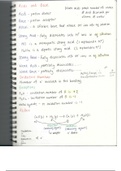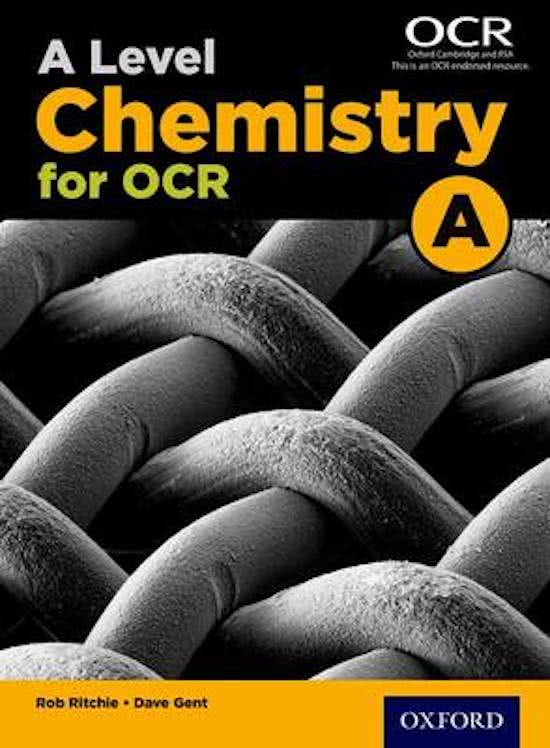Disproportionation - Study guides, Class notes & Summaries
Looking for the best study guides, study notes and summaries about Disproportionation? On this page you'll find 39 study documents about Disproportionation.
Page 4 out of 39 results
Sort by

-
YORK COLLEGE/CUNY Chemistry 108 Exam 2 | 2022 UPDATE
- Exam (elaborations) • 7 pages • 2022
-
- $15.49
- + learn more
YORK COLLEGE/CUNY Chemistry 108 Exam 2 Part I: Multiple Choice (60 pts) 1. What is the molecular mass of Br2? A) 79.90 amu B) 79.90 g C) 159.8 amu D) 159.8 g E) 2.65 x 10-22 amu 2. Which one of the following does not represent 1.000 mol of the indicated substance? A) 6.022 × 1023 C atoms B) 26.00 g Fe C) 12.01 g C D) 65.39 g Zn E) 6.022 × 1023 Fe atoms 3. Boron obtained from borax deposits in Death Valley consists of two isotopes. They are boron-10 and boron-11 with atomic masse...

-
YORK COLLEGE/CUNY Chemistry 108 Exam 2 | 2022 UPDATE
- Exam (elaborations) • 7 pages • 2022
-
- $13.49
- + learn more
YORK COLLEGE/CUNY Chemistry 108 Exam 2 Part I: Multiple Choice (60 pts) 1. What is the molecular mass of Br2? A) 79.90 amu B) 79.90 g C) 159.8 amu D) 159.8 g E) 2.65 x 10-22 amu 2. Which one of the following does not represent 1.000 mol of the indicated substance? A) 6.022 × 1023 C atoms B) 26.00 g Fe C) 12.01 g C D) 65.39 g Zn E) 6.022 × 1023 Fe atoms 3. Boron obtained from borax deposits in Death Valley consists of two isotopes. They are boron-10 and boron-11 with atomic masse...
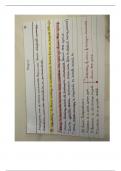
-
Flashcards for Group 7 (Halogens) - Module 3
- Class notes • 6 pages • 2024
-
Available in package deal
-
- $3.89
- + learn more
These are handwritten flashcards for chemistry made using my class notes and they summarise everything you need to know for Group 7 (Halogens) chapter in Module 3 of chemistry in regards with OCR A specification. These flashcards with sure thrive you to succeed in your Alevel Chemistry exam to achieve A/A*
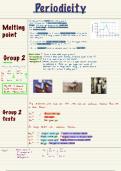
-
Comprehensive summary notes on periodicity topic for A-level chemistry
- Summary • 2 pages • 2023
-
- $9.74
- + learn more
Easy to understand and ‘fun’ summary notes on some of the most difficult A-level chemistry topics; illustrated for additional help. Get an A* for your A-level chemistry! (All at a very low price (-; ) Periodicity - (melting points, group 2 trends, group 2 tests, group 7 trends, group 7 tests) complete with images and graphs to aid your understanding! Good luck!

-
"Interconnections of Redox Reactions and Volumetric Analysis in JEE: Mind Maps"
- Summary • 1 pages • 2023
-
- $8.59
- + learn more
The heading "Redox Reactions and Volumetric Analysis" in the context of JEE (Joint Entrance Examination) refers to two important topics in chemistry that are commonly covered in the JEE syllabus. A mind map can help organize and visualize the key concepts and relationships within these topics. Here's a brief description of each: Redox Reactions: Redox (reduction-oxidation) reactions involve the transfer of electrons between reactants. They play a crucial role in various chemical processes ...
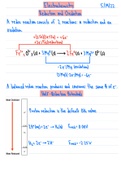
-
Electrochemistry(General Chem II 2022)
- Class notes • 30 pages • 2022
-
- $24.49
- + learn more
This document covers many electrochemistry topics including balancing redox reactions using 2 different methods, electroplating, pourbaix diagrams, cyclic voltammogram, electrochemical cells, and cell potential.

-
Redox
- Summary • 19 pages • 2022
-
- $5.49
- + learn more
this chapter contains all the necessary and important concepts to learn about redox reactions and redox titrations. as these are handwritten notes you might face some problems while understanding or might face some issues recognising the handwriting. feel free to mail to know more about it.
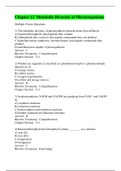
-
Chapter 13 Metabolic Diversity of Microorganisms,100% CORRECT
- Exam (elaborations) • 28 pages • 2021
-
- $17.49
- + learn more
) The metabolic diversity of photosynthetic bacteria stems from different A) bacteriochlorophylls and pigments they contain. B) chlorophylls they can have and organic compounds they can produce. C) light-harvesting complexes, electron donors, and organic compounds they produce. D) unrelated taxa capable of photosynthesis. 2) Whether an organism is classified as a photoheterotroph or a photoautotroph depends on its A) energy source. B) carbon source. C) oxygen requirements. D) carbon a...
Detailed explanation of Group 2 and Group 7 of the periodic table with basic qualitative analysis and redox.

Do you wonder why so many students wear nice clothes, have money to spare and enjoy tons of free time? Well, they sell on Stuvia! Imagine your study notes being downloaded a dozen times for $15 each. Every. Single. Day. Discover all about earning on Stuvia



